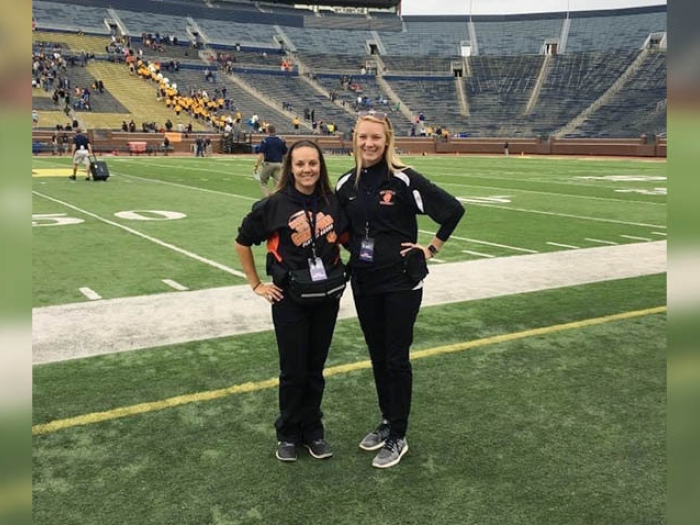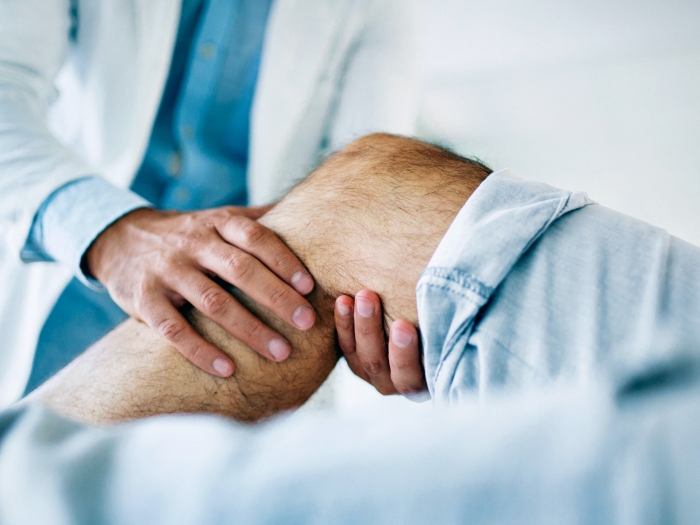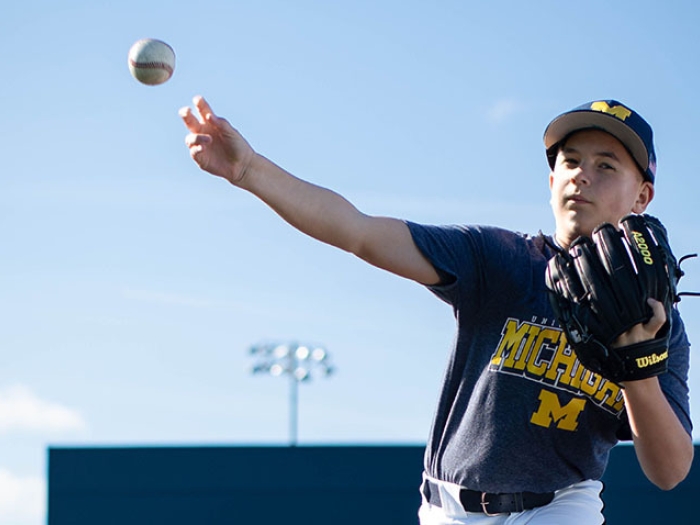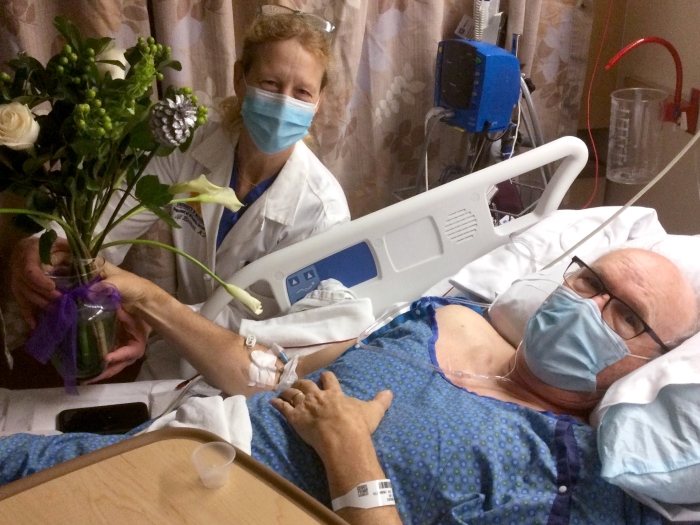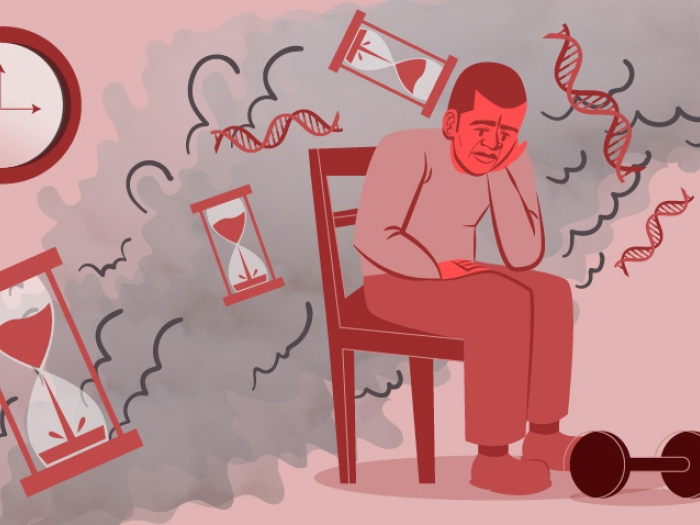As kids head back to school and to fall sports, high school athletic trainers are working to keep them safe. But, what if they’re hurt away from watchful eyes?
7:00 AM
Author |
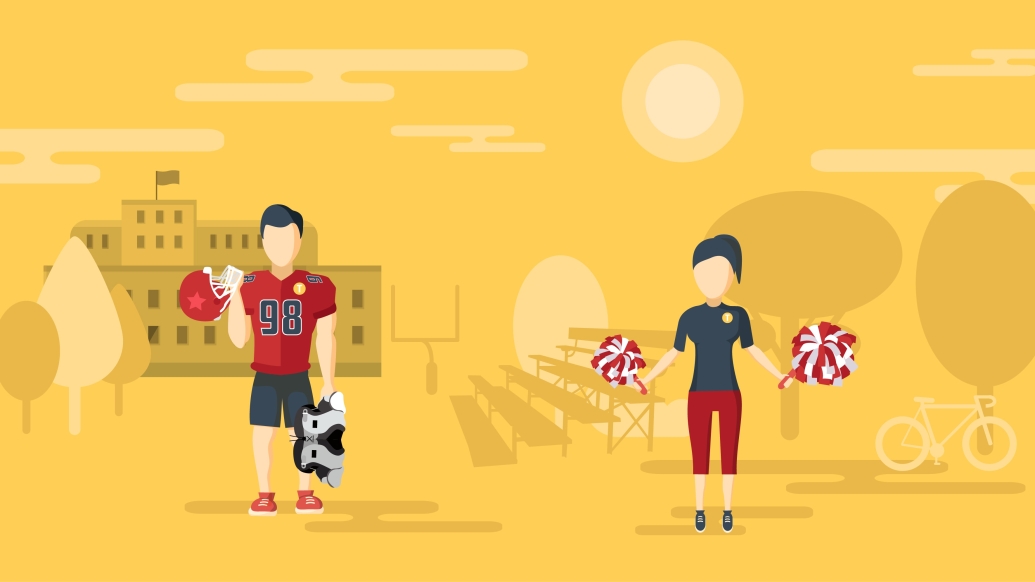
Whether you have a student-athlete on the football field or the volleyball court, safety during high school sports is an important topic.
SEE ALSO: Physical Therapist: No Solid Research on Cupping's Effect
Trevor O'Brien, M.S., A.T.C., athletic trainer at University of Michigan MedSport, says athletes and families should know high school athletic trainers are there to help them should an injury arise, whether during practice or a game.
"We always want parents to know their students are in good hands," O'Brien says. "We are there to help protect and be the first line of treatment for these athletes."
O'Brien is one of more than 20 athletic trainers contracted to local high schools and sports programs in the area.
He mentions there are several sports-related injuries high school athletic trainers often see. Here are some common injuries they treat, and ways to address similar injuries in your athlete should something happen away from school:
Heat-related injuries
Dehydration, heat stroke and heat exhaustion are common health threats for athletes, especially if activities take place outside.
"Per the Michigan High School Athletic Association, all athletic activity must be discontinued if the heat index reaches 104 degrees, which applies for all sports on all athletic surfaces," O'Brien says.
He recommends making sure your athlete stays properly hydrated throughout the entire day leading up to, during and after the practice or event. Should they experience heat stroke, O'Brien adds the only effective treatment is cold water submersion followed by immediate transport to an emergency facility.
Dislocated joints
Athletic trainers see dislocated fingers, shoulders, kneecaps and shoulder separations, among others. "In these situations we often splint the body part to stabilize it while calling the athlete's parent or guardian to take them to the hospital for further X-rays and treatment," O'Brien says.
"You probably won't have a splint at home should your child injure a bone or joint," he adds. "Try to have them keep the injured location as immobile as possible until you can get them to the hospital."
Concussions
Concussions tend to be seen more in contact sports such as football, hockey and wrestling, but can also be seen in sports such as cheerleading, basketball and soccer. O'Brien says the evaluation process for concussions should be easy for certified athletic trainers, but sometimes it becomes difficult when injured athletes don't want to admit their symptoms because they want to continue playing. If trainers suspect an individual is displaying concussion-like symptoms, they follow Michigan state law and remove the athlete from play and make sure her or she receives a physician evaluation.
SEE ALSO: 5 Steps to Safely Play Summer Sports
"There is currently no solid prevention method for concussions," O'Brien says. "Over the last five or so years, the focus has been educating parents, coaches and athletes on signs and symptoms, proper return to play following a concussion and teaching proper mechanics during tackling drills."
He recommends educating yourself and your family on the symptoms of concussion should it happen on your watch.
Sprains, tears and contusions
O'Brien says the most common injury he tends to see in student-athletes is ankle sprains. Ligament sprains, muscle strains and bone contusions, or bruising of bones, are also seen in almost every sport.
"Parents should try to immobilize the injury as quickly as possible and can also put an ice pack on the injury to reduce swelling, pain and bruising," O'Brien says. "If there is an obvious bone deformity, get them to a hospital or physician that can evaluate the situation, and then make sure your athlete rests to let the injury properly heal."
CPR and first aid
"We are trained in CPR and use of AED machines, EpiPen administration, rescue breathing for a drowning victim, and stabilizing a cervical spine that could potentially be fractured," O'Brien says.
Be sure to know CPR (check out our easy video to learn how) should you encounter someone needing help. If your student-athlete is prescribed an EpiPen, make sure he or she takes it to all practices and events.
U-M MedSport is contracted with the following schools/sports programs: Ann Arbor Huron, Ann Arbor Pioneer, Ann Arbor Skyline, Belleville, Brighton, Clarenceville, Dexter, Farmington, Farmington Harrison, Gabriel Richard, North Farmington, Northville, U-M Athletics, USA Hockey, U-M Rugby, Whitmore Lake and Ypsilanti Consolidated.
This article was originally published on August 17, 2016, and was updated on August 17, 2018.

Explore a variety of health care news & stories by visiting the Health Lab home page for more articles.

Department of Communication at Michigan Medicine
Want top health & research news weekly? Sign up for Health Lab’s newsletters today!
